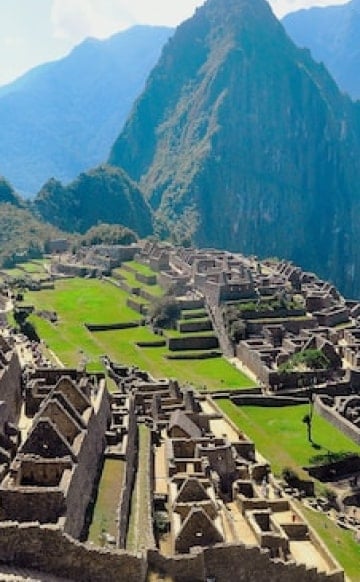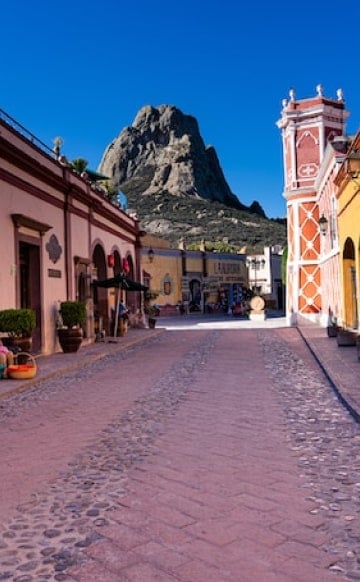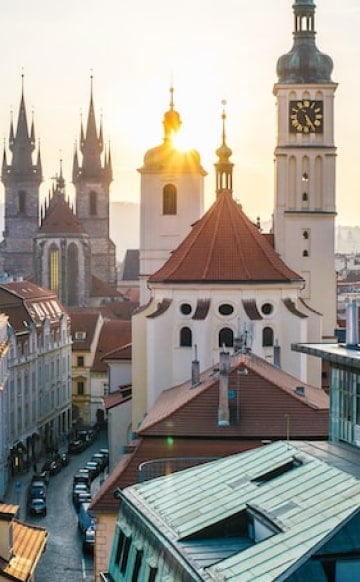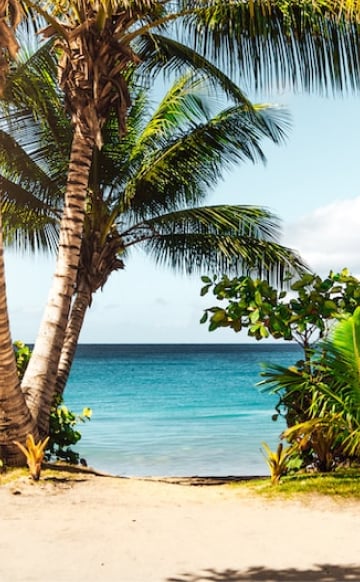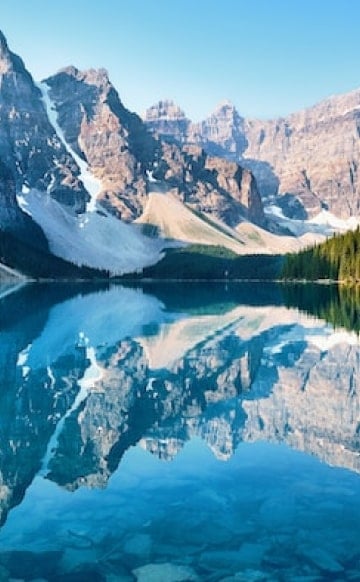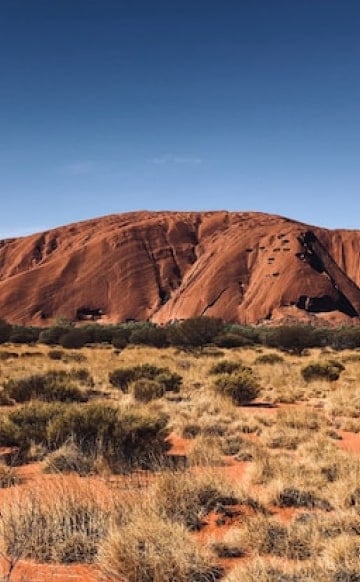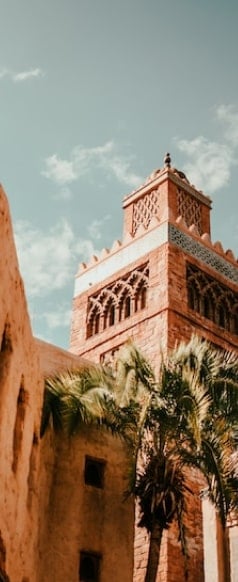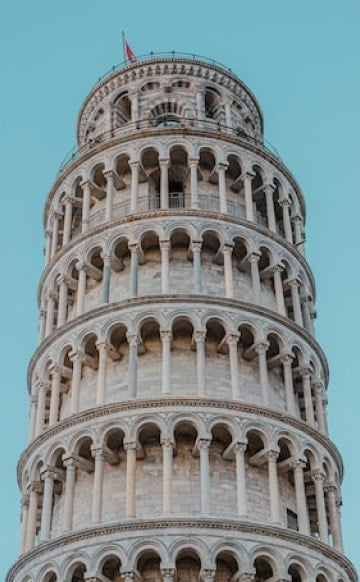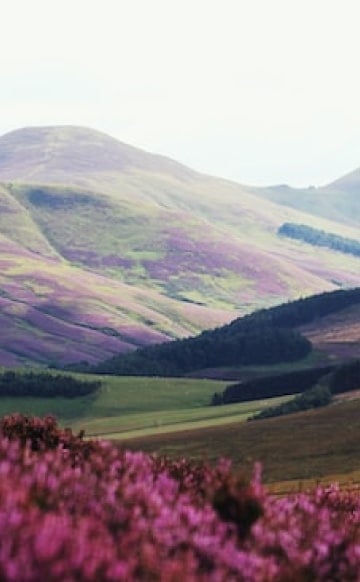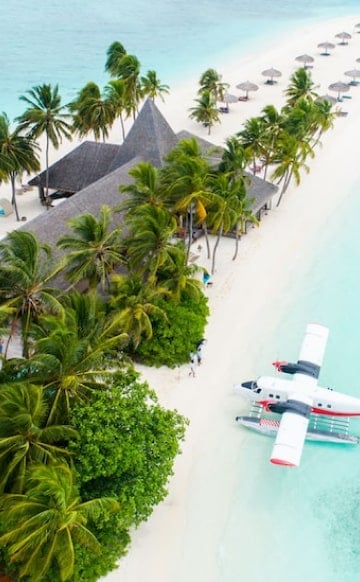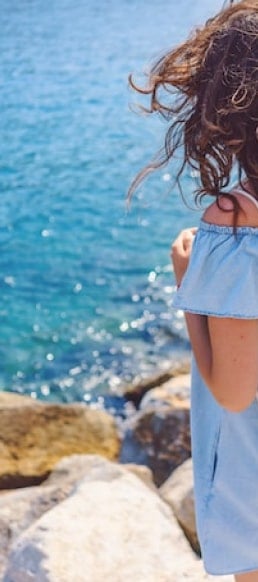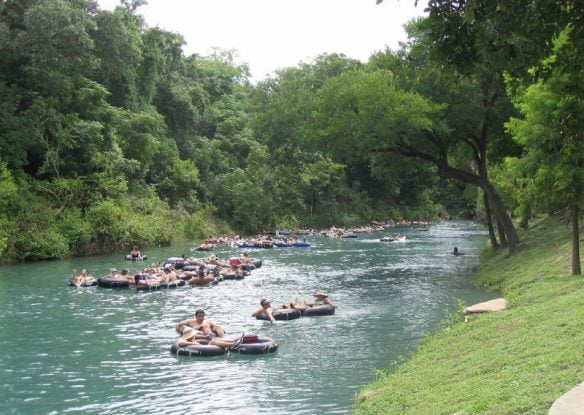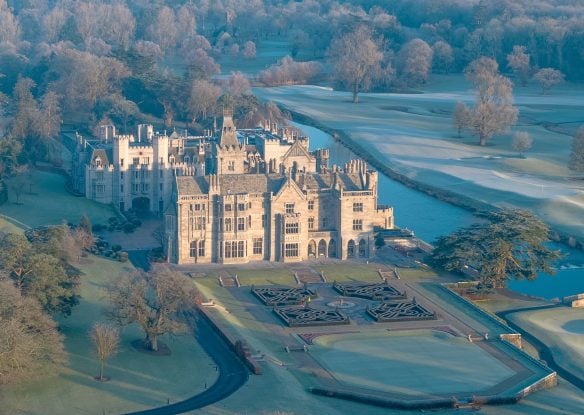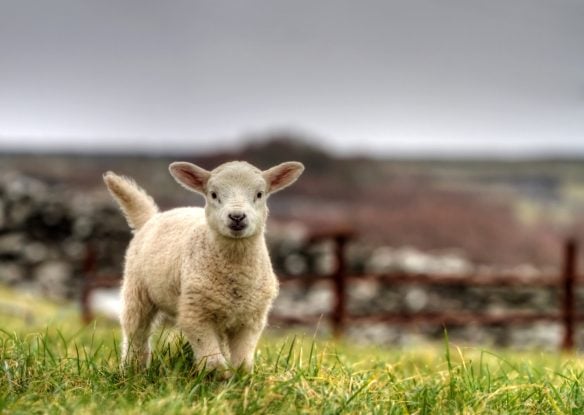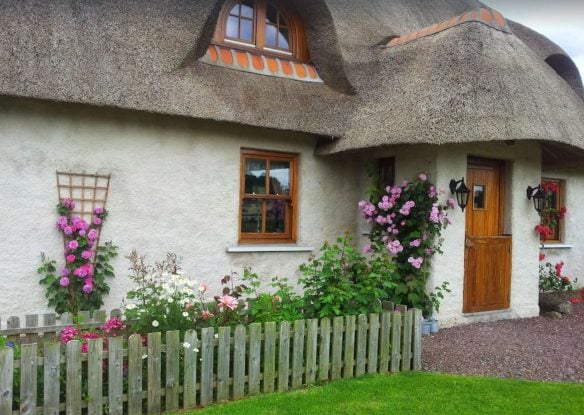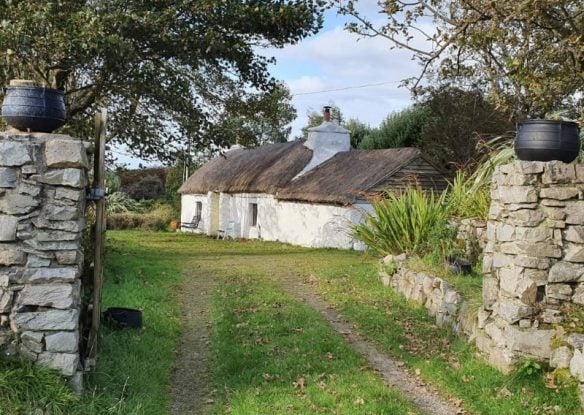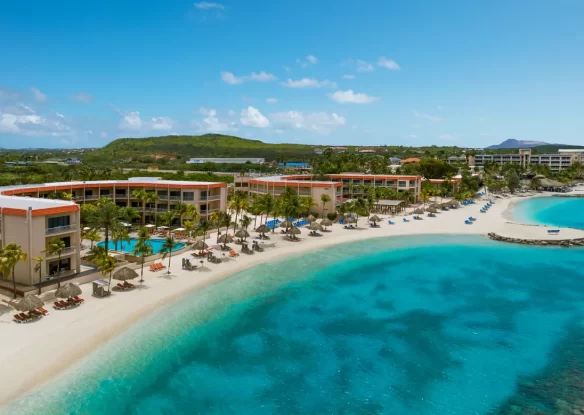The Emerald Isle is often noted as being one of the most beautiful places on earth, with its endless brilliant green hills and dramatic cliffs that reach down to picturesque beaches and a turquoise sea, along with magnificent castles and charming villages. But when it comes to the best of the best, these destinations may be the most spectacular of all.

Cliffs of Moher
The Cliffs of Moher are one of Ireland’s most iconic, and most visited natural attractions. Soaring more than 700 feet over the Atlantic Ocean, they stretch from about the village of Doolin, for nearly five miles to Hags Head in County Clare at the southwestern edge of the Burren region. These imposing, breathtaking cliffs also offer some of the most amazing views in the country. On a clear day, you’ll see Galway Bay and the Twelve Pins mountain range in the distance, as well as the Aran Islands: Inis Oirr, Inis Meain and Inis Mor. If you’re lucky, you’ll hear the beautiful sounds of Irish harpist Tina Mulrooney entertaining visitors with traditional Irish ballads like “Danny Boy” while the ocean waves crash below.

Slieve League Cliffs
Although the Cliffs of Moher are the most famous, Slieve League is the home of some of the highest sea cliffs in all of Europe, perched along the northwest coast in Donegal. A nearly sheer drop of about 2,000 feet separates the Atlantic from the cliff’s highest point. From here, on a clear day, you can see the Ben Bulben Mountains in Leitrim and Sligo, Donegal Bay and a seemingly endless bright blue sea as seabirds fly overhead.

Ring of Kerry
The Ring of Kerry is a popular tourist trail, but it’s arguably the most scenic of all Irish routes and well worth exploring. It runs for 120 miles in southwest Ireland with views including heather-topped mountains, lush meadows, glacial lakes, waterfalls, medieval ruins, jaw-dropping coastal scenery with idyllic beaches, castles and more. The predominantly coastal Ring starts and ends in Killarney, a historic inland town set just outside the oldest protected wilderness in the country, Killarney National Park, home to a 15th-century castle and Ireland’s only herd of wild red deer.

Skellig Michael
While you’re on the Ring of Kerry trail, visiting magnificent Skellig Michael is well-worth the side trip. Located eight miles off the coast of County Kerry, getting here requires a typically rather rocky boat trip, but your reward is a craggy, windswept island with stone steps reaching to a cluster of beehive-shaped stone huts that date back to the sixth century. It was here on the 750+ foot high cliff tops that early Christian monks once lived in their pursuit of a greater union of God, withdrawing from civilization to this remote and inaccessible, yet beautiful destination. While making the steep 600-step climb to view the monastic remains, look for all types of seabirds, including Gannets, Black Guillemots, Cormorants, Razorbills and Herring Gulls.

Valentia Island, County Kerry
Another extremely rewarding side trip from the Ring of Kerry, Valentia Island, sits just off the Iveragh Peninsula, linked to the mainland by a bridge in Portmagee. The island is packed with spectacular natural beauty, with its western region dominated by the barren, dramatic cliffs of Bray Head offering jaw-dropping views of the coastline as well as lush and colorful vegetation.

Beara Peninsula
The Beara Peninsula, set between Kenmare Bay to the north and Bantry Bay to the south, half in Kerry and half in Cork, offers overwhelming beauty with a landscape that is truly magical, picturesque and filled with rugged charm. Enjoy a quieter, less-traveled destination with highlights that include everything from scenic seaside towns featuring colorful shopfronts and fantastic seafood eateries to Garinish Island, known as Ireland’s Garden of Eden, with an almost subtropical climate that’s home to a rich variety of plants, ornamental gardens and even a colony of basking seals.

Dingle Peninsula
The Dingle Peninsula is the northernmost of County Kerry’s major peninsulas and Europe’s westernmost point. Unlike the Ring of Kerry, where cliffs tend to dominate the ocean, here it’s the other way around, with the sea dominating this smaller peninsula. Picture-postcard scenery includes cobalt blue waters that surround lush, emerald green hills and golden sands – in the backdrop you’ll find a range of mountains that form its spine, running from the Slieve Mish range to Mount Brandon, the country’s second-highest peak. Dingle is also known for its high concentration of ringforts and other ancient ruins, though its beauty is what’s most unforgettable.

Killarney National Park
Killarney National Park really deserves more than an hour or two of exploring. Home to one of the most beautiful waterfalls in Ireland, Torc Waterfall, the towering 60-foot falls plunge from the Torc Mountains via a river known as the Devil’s Punch Bowl. The 41-square-mile park is also home to native red deer that have lived in Ireland since the last ice age, now surviving only within the park’s refuge as well as the country’s tallest mountain range, McGillycuddy’s Reeks. Killarney is most famous for its spectacular lakes, which cover nearly a quarter of the entire park. Ross Castle, which rests on the shores of Killarney’s lower lake, was constructed in the 15th century and is an excellent example of the stronghold of an Irish Chieftain during the Middle Ages.

Glendalough, County Wicklow, Ireland
Glendalough, Ireland’s “Valley of Two Lakes,” rests in a glacial valley in the heart of the Wicklow Mountains. This “city of seven churches” is similar to Skellig Michael in that it was founded in the sixth century as a monastic settlement by hermits whose love of isolation may have been matched only by a love of amazing scenery. Visitors can explore one of the best-preserved examples of a round tower, medieval churches, decorated stone crosses and a cathedral. The area is also renowned for hiking and hill walking opportunities, including the chance to walk in the footsteps of St. Kevin by following St. Kevin’s Way, an 18.6-mile Pilgrim Path through the heather-covered Wicklow hills.

Brittas Bay
Brittas Bay is one of the most beautiful beaches on Ireland’s east coast with more than three miles of white sand dunes and magnificent stretches of clean, powdery sands sitting at the edge of calm waters that are ideal for swimming. Brittas Bay has been the recipient of a European Blue Flag for a number of years, the international symbol for the highest quality beach areas in Europe. The dunes are also home to a unique and valuable mosaic of habitats with rich invertebrate, plant and bird populations. Red foxes, badgers and rabbits burrow in the sands, Chiffchaff warblers and Whitethroats nest among dense thickets of Sea Buckthorn, and even brilliant pink Pyramidal Orchids can be spotted growing in the dunes.

Aran Islands
The Aran Islands are a group of three islands located just off the west coast of Ireland in County Galway: Inis Mor, Inis Meain and Inis Oirr. The picturesque islands offer a chance to experience traditional Irish villages, unspoiled by modern development. Here, most locals still speak Gaelic as their first language and drive pony traps rather than motor vehicles. Inis Mor is the largest of the islands and one of the country’s most popular tourist destinations, steeped in history with more than 50 different monuments of Christian, pre-Christian and Celtic mythological heritage, including Dun Aonghasa Fort, which stands over a 300-foot cliff that spans the entire western section of the island. Inis Meain and Inis Oirr offer an even more authentic look at traditional Irish life, while all three of the islands are filled with breathtaking beaches as well as stunning ocean vistas.

Boyne Valley
The Boyne Valley, just an hour north of Dublin, is an almost endless green landscape dotted with passage tombs, monastic ruins and home to Trim Castle, famous for its role in Mel Gibson’s “Braveheart.” This is also where you’ll find Newgrange, one of the finest examples of a passage grave in all of Western Europe, and Ireland’s most renowned pre-historic site which dates back to 3000 BC – before Stonehenge and even the Great Pyramid of Giza in Egypt. The valley is also home to Mellifont Abbey, the first Cistercian monastery established in Ireland, as well as the Hill of Tara, the former seat of the High Kings of Ireland.

Giant's Causeway
Giant’s Causeway is actually in Northern Ireland, located near the town of Bushmills, though it’s certainly well-worth making the trek to see it. Flanked by the wild North Atlantic and a landscape of soaring cliffs, this coastal area is made up of about 40,000 basalt columns. Created by a volcanic eruption that took place some 60 million years ago, this incredible site has inspired many artists, stirred scientific debate and sparked numerous myths and legends over the centuries.

Achill Island
Achill Island in County Mayo, just off Ireland’s northwest coast is the largest island in the country and accessible via a bridge from the mainland. Its colorful landscapes have inspired countless writers and artists with stunning landscapes, breathtaking mountains and miles of unspoiled beaches, making it a paradise for watersports like swimming, surfing, windsurfing and kayaking. The roughly 25-mile coastal Atlantic Drive is a must for visitors. In addition to jaw-dropping scenery, the remains of a 16th-century Irish tower house, once used by a legendary pirate queen, can also be spotted along the way.

Connemara
Connemara is one of the most beautiful, unspoiled destinations in all of Europe. It stretches west from Galway city to Ireland’s west coast, filled with a wide array of colors and beautiful wilderness areas that include everything from bogs and lakes in the south to golden beaches and mountain views in the north and west, like the rugged Twelve Bens Mountain Range. There are a number of incredible sights to behold in this region, including magnificent Kylemore Abbey, Connemara National Park, the charming town of Clifden and Clifden Castle.

Coral Beach, Galway
Coral Beach in Carraroe, County Galway, also known as Trá an Dóilín, is renowned as an area of great natural beauty. The beach is noted, not for being made of sand, but for its fine coral-like formations of lime which have leached out of seaweed, become hardened and then breaks off. It’s also famous for its sparkling clean waters that are excellent for swimming, snorkeling and diving.

Westport and Croagh Patrick
Westport is known as County Mayo’s finest town with a ton of charisma and charm oozing from cheerful, multicolored storefronts and a wide range of pubs, cafes and restaurants. Sitting along the southeast shores of the Atlantic inlet of Crew Bay against the backdrop of Croagh Patrick, you’ll find a picturesque tree-lined boulevard dotted with brilliant flowering blooms in the spring as well as a number of stone bridges crossing over Carrowberg River and plenty of blue flag beaches nearby. Croagh Patrick is a must-see, or even a must-climb if you’re up to it. This 2,507-feet high mountain is climbed annually by pilgrims on Reek Sunday and offers astonishing views from the top on a clear day.

Copper Coast Road, Waterford
The Copper Coast Road is a stretch of road along the southern coast of Ireland that runs between Tramore and Dungarvan in County Waterford, passing through six small villages that showcase glorious views of towering cliffs, idyllic sandy coves and caves under the shadow of the Comeragh Mountains. The drive is filled with panoramic seascapes as it hugs the wild countryside as well as a number of blue flag beaches like Bunmahon and Clonea.

Ardmore
This seaside fishing town situated roughly 15 miles west of Dungarvan in County Waterford has won a number of awards for its attractiveness, including the National Title in the Tidy Towns competition. It was originally a 5th-century monastic settlement founded by St. Declan in 316 AD, reputed to be the very first of its kind in the country. Ardmore is also the romantic setting of author Nora Roberts’ popular “Gallaghers of Ardmore” series. Its round tower, built in the 12th century, rises to a height of nearly 100 feet and overlooks the picturesque village and beautiful beaches. It was once a place of refuge for ecclesiastics and the safe-keeping of their chalices, books and relics.

Rosses Point, Sligo
Rosses Point is a village in County Sligo with its point guarding Sligo Harbour, marked by the Metal Man lighthouse, placed offshore by local seafarers nearly two centuries ago. By taking the coastal walk, you’ll enjoy some of Ireland’s best scenery as well as the Lady Waiting on the Shore, a monument dedicated to all the local women who waited behind while loved ones went to sea. The easy stroll brings visitors along the promenade where the Garavogue meets Sligo Bay, with mountains on one side and the old village on the right, also passing the ruined Elsinore House, once home to WB Yeats’ Uncle Henry Middleton.

Lough Key Forest Park and Castle Island
Lough Key in County Roscommon is one of Ireland’s most beautiful lakes as well as home to Forest Park, with roughly 800 acres of woodland featuring a bog garden, underground tunnels, an observation tower, wishing chair and a gazebo. It’s also filled with scenic walking trails providing magnificent views of the lake, canals and trees. The lake itself is filled with a number of smaller islands, including Castle Island, also known as MacDermot’s Island, with the ruins of a medieval castle.

Rock of Cashel
The Rock of Cashel was the traditional seat of the kings of Munster for several centuries prior to the Norman invasion, located in the picturesque countryside of County Tipperary in the town of Cashel. This magnificent group of medieval buildings set on an outcrop of limestone includes a 12th century round tower, Romanesque Chapel, 13th-century Gothic cathedral and 15th-century castle as well as the restored Hall of the Vicars Choral. The complex is one of the most remarkable collections of medieval architecture and Celtic art anywhere in Europe and an incredibly stunning sight from afar.

Kilkenny City
Kilkenny is often referred to as Ireland’s most beautiful historic city with numerous historic sites concentrated in a small area in the city center. It’s actually both medieval and modern, with narrow, winding streets and ancient buildings combined with the progressiveness of a lively city and a hub for Ireland’s arts and culture. The Black Abbey, founded in 1225, features gorgeous stained glass windows and is surrounded by the old city walls, while Kilkenny Castle, an impressive Norman Castle, is arguably the star of the show, dominating the city skyline overlooking the River Nore.

